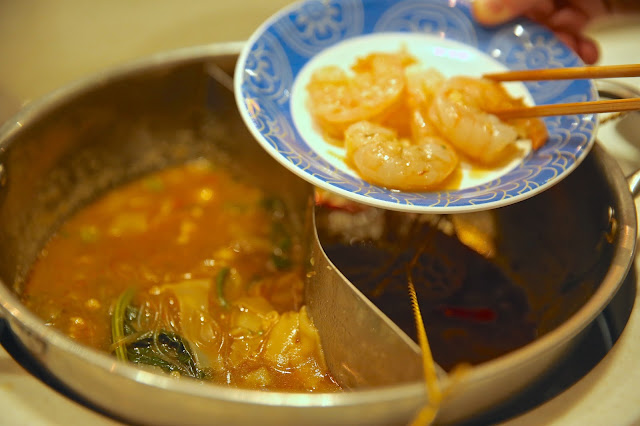Having just spent two weeks discovering the wonderful food scenes of Tel Aviv and Jerusalem (see reviews here and here) as part of the 2016 Vibe Israel Food Tour, I was curious to discover whether some of those foodie experiences could also be found right here in the heart of London.
And so I recently headed to The Palomar, and my findings are written up below. If you would like to read more about my Israeli features including Eyal Shani’s recipe for Burnt Cauliflower, click here.
Name: The Palomar
Where: 34 Rupert Street, London W1 6DN, http://thepalomar.co.uk/
Cost: Average cost per person is £40, not including drinks. The raw bar offers cold starters including oysters, salmon and beef tartare from £8 to £16.50, while hot dishes range from £9.50 to £25. The recommendation is to order two to three dishes per person.
About: The Palomar is the London outpost of a popular Israeli group of restaurants that owns the fabulous Machneyuda Restaurant in Jerusalem (see my review here). It serves the food of modern Jerusalem, with influences of Spain and North Africa.
Next to Chinatown just south of Shaftesbury Avenue, The Palomar is a manically busy restaurant with two seating areas. At the zinc-topped bar overlooking the open-plan kitchen is a 16-seat counter where you can book from 5.30pm each day.
There is also a quieter 40-seat room towards the back of the restaurant with beautiful parquet floors, dark oak-paneled walls and blue leather banquettes, for which advanced bookings can be made.
We sat at the kitchen counter (which I thoroughly recommend), and had a brilliant time watching the chefs at work and talking to them as they plated.
The Palomar is a busy restaurant and noise levels are high, but it is fun and casual and the atmosphere resonated with what I had experienced in Israel. On our evening there, the head chef was Eyal 'Shpitz' Jagerman (son of the owner), and our server was Olga; service was super-friendly and informative.
What We Ate: We started with a crispy falafel (£4) of octopus and cod served with a rich and well-flavoured tahini and ambah. Ambah is a magnificent sauce that is hot, sour and sweet all at once, made from vinegared mangoes, turmeric, chili and other spices. I tried Ambah in Nazareth, Israel, where it is used as a spicy sauce for fish dishes, falafel, kubbah, kebabs and eggs.
The beetroot carpaccio from the raw bar (£8) took me straight back to Jerusalem, with its gorgeous presentation and layered combination of vegetarian textures and flavours. With burnt goat's cheese, hazelnut brittle, lentil tuile and a pomegranate molasses vinaigrette, this was a winner of a dish.
I was happy to see an entire section of the menu dedicated to their Josper grill – from it, we chose the aubergine (£9.50) - with smoky aromas and flavours, a creamy feta emulsion, tomatoes, fresh oregano, crispy shallots and pine nuts, aubergines do not get much better than this!
To accompany, we ordered Machneyuda’s signature polenta Jerusalem style (£9.50) - served with crunchy asparagus, a rich mushroom ragout, Parmesan and truffle oil, this was as good as I remember from their restaurant in Jerusalem where we tried this for the first time.
Octo-hummus (£13) partnered Josperised octopus with chickpea Msabacha (similar to hummus but with coarser pieces or sometimes whole chickpeas), cherry tomato confit and a zingy salsa verde of parsley, chilli and coriander. The octopus had a deliciously charred flavour while still remaining very soft and tender, lifted by the ultra-fresh herb dressing.
The Jerusalem mix (£15) came with chicken livers and hearts, veal sweetbreads a la plancha, okra, tomato, grilled onions and tahini – I was told to try this while in Jerusalem but didn’t manage to at the time. This was a lighter offal version than what is on offer in Jerusalem (with tongue, tripe etc) but delicious nevertheless – the offal was well cooked, I loved the creamy sweetbreads, and the grilled onions made the dish sing.
For dessert, we had the Jerusalem Mess (£7) – a gorgeous pudding with a number of ingredients including labneh mousse (soft cheese), almond crumble, strawberries, lemon cream, elderflower and apple jelly, fresh sorrel and basil cress. Creamy, crunchy, zingy and fresh, this dessert had it all and was a superb way to end our meal at The Palomar.
Equally good was the Malabi rose-scented milk pudding (£7) that came with raspberry coulis, coconut meringue, pistachio crunch, fresh raspberries and kataifi pastry (like angel hair pastry commonly seen in some types of baklava and in my favourite knafe). I remember having this in Jaffa from a street seller, served hot and with a little cinnamon. This is a favourite in Israel, served hot or cold on the streets but also in the finest restaurants.
What We Drank: We kicked off the evening with The Prelude - a refreshing cocktail of Prosecco, Aperol and Kamm & Sons. I liked this so much, the barman kindly told me how to prepare it - 25ml Aperol, 15ml Kamm & Sons, topped up with approximately 100ml Prosecco or Champagne.
The wines of Israel are gutsy and robust, and for our meal we chose a 500ml carafe of Syrah Har'el Clos de Gat 2011, from Judean Hills, Israel (£36), which worked a treat with all the grilled vegetables and meats and the lemony, spicy dressings.
Periodically, as in Israel, the staff would bring a complimentary shot, to be downed in one with the chefs and waiters, with a shout of 'la heim!’ (Cheers!).
Likes: There is so much to like about The Palomar - a buzzing atmosphere, great food and lively, knowledgeable and friendly service.
Dislikes: None.
Verdict: For a taste of the wonderful cuisine of Israel in the heart of London, head to The Palomar. Book the zinc kitchen counter, and order as many small dishes as you can. Great food and super friendly service. Highly recommended.



























































